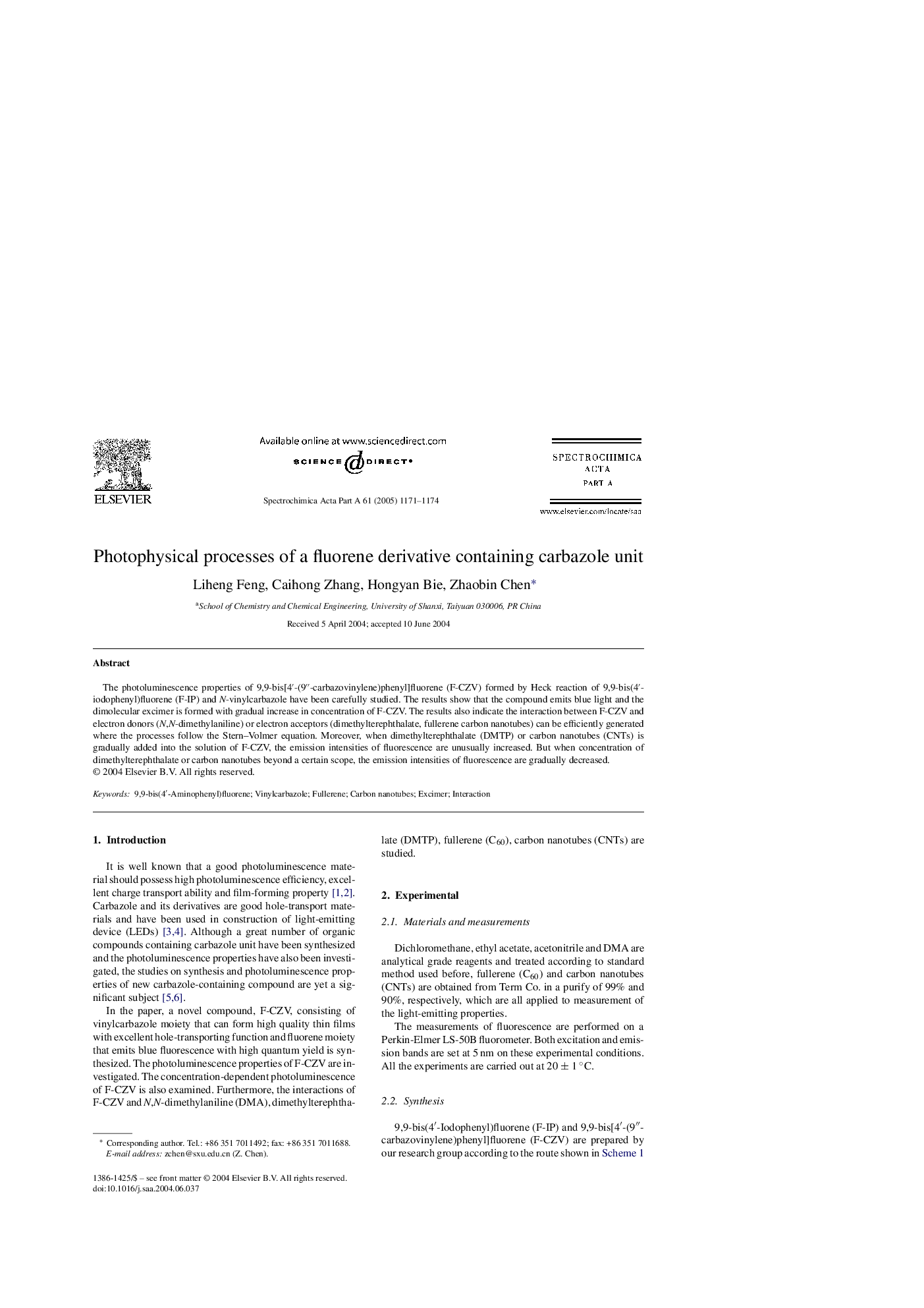| Article ID | Journal | Published Year | Pages | File Type |
|---|---|---|---|---|
| 10557405 | Spectrochimica Acta Part A: Molecular and Biomolecular Spectroscopy | 2005 | 4 Pages |
Abstract
The photoluminescence properties of 9,9-bis[4â²-(9â³-carbazovinylene)phenyl]fluorene (F-CZV) formed by Heck reaction of 9,9-bis(4â²-iodophenyl)fluorene (F-IP) and N-vinylcarbazole have been carefully studied. The results show that the compound emits blue light and the dimolecular excimer is formed with gradual increase in concentration of F-CZV. The results also indicate the interaction between F-CZV and electron donors (N,N-dimethylaniline) or electron acceptors (dimethylterephthalate, fullerene carbon nanotubes) can be efficiently generated where the processes follow the Stern-Volmer equation. Moreover, when dimethylterephthalate (DMTP) or carbon nanotubes (CNTs) is gradually added into the solution of F-CZV, the emission intensities of fluorescence are unusually increased. But when concentration of dimethylterephthalate or carbon nanotubes beyond a certain scope, the emission intensities of fluorescence are gradually decreased.
Related Topics
Physical Sciences and Engineering
Chemistry
Analytical Chemistry
Authors
Liheng Feng, Caihong Zhang, Hongyan Bie, Zhaobin Chen,
